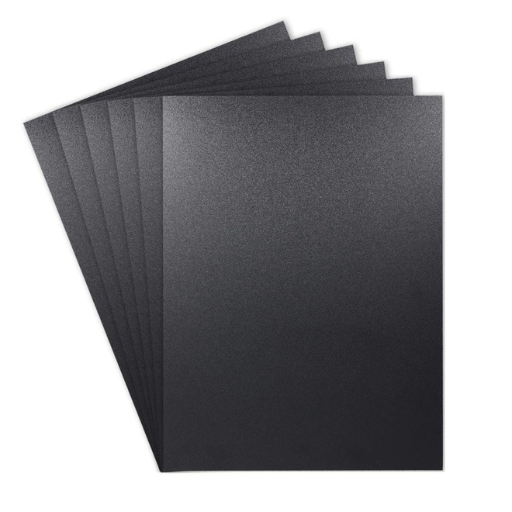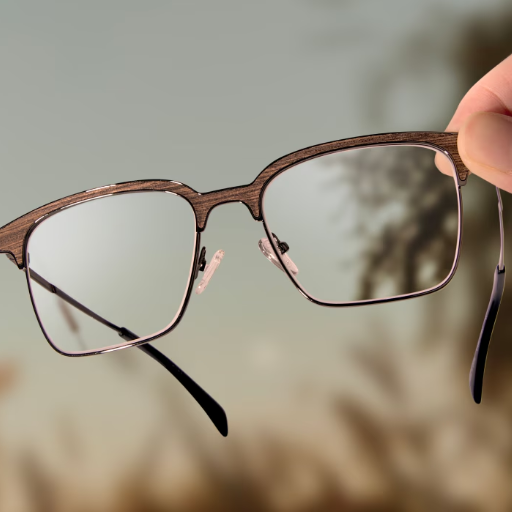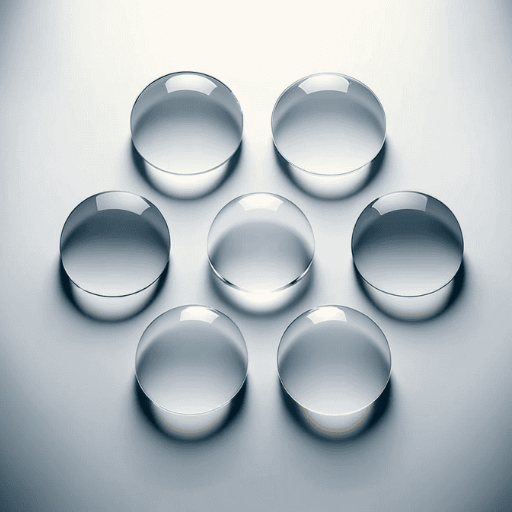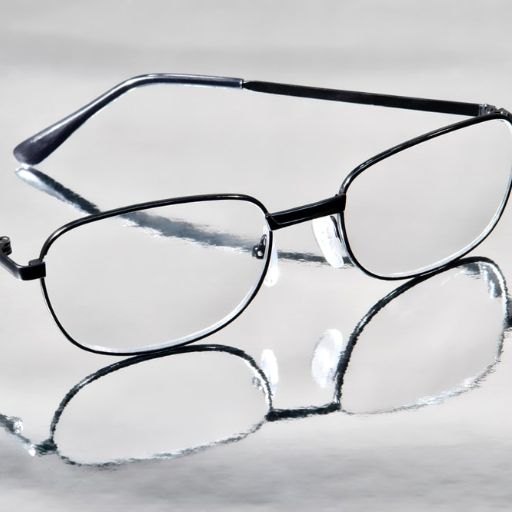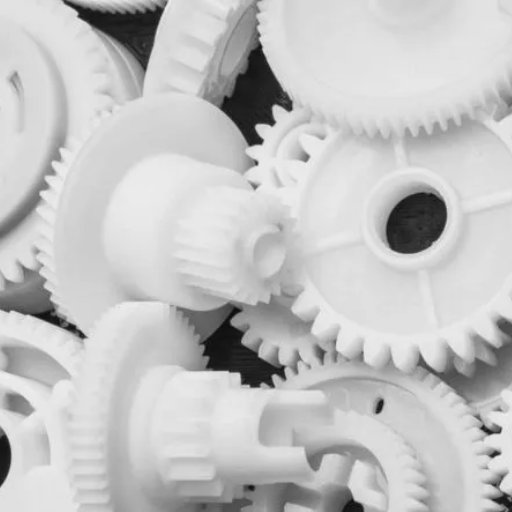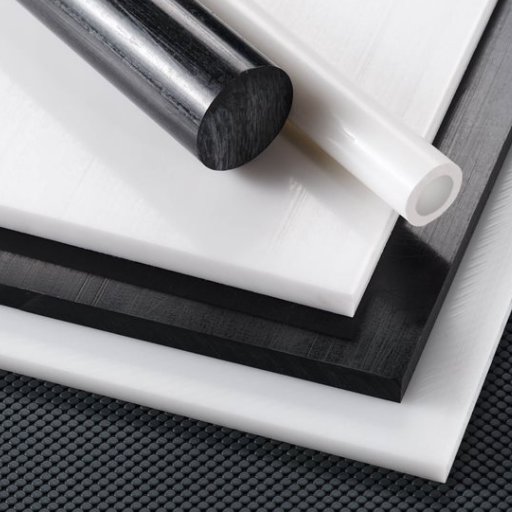Take the broadly understood thermoplastic polymer, acrylonitrile butadiene styrene (ABS), this material certainly ranks among the top-notch as well as the most developed among others over the globe. Handy to be named durable, resistant to impact, easy to shape, and process, a polymer known as swords has been used quite a lot in industries, including but not limited to automotive, electronic, or consumer goods, including additive manufacturing. ABS plastic, what is it and why has it become this popular in many categories? Why do many choose to deal with ABS plastic over other materials? This research diverts attention to topics such as chemical structure, advantageous features, benefits, and complex applications of ABS plastics in order to explain and illustrate why this material is singled out and how it easily adapts to various sectors, needs, and activities of today. Whether you are a plastination specialist, a product designer, an industrial engineer, or a layman who wants to know a thing or two about material engineering, this article shall prove to be very informative on the subject of the impressive properties and importance of ABS.
Introduction to ABS Plastic
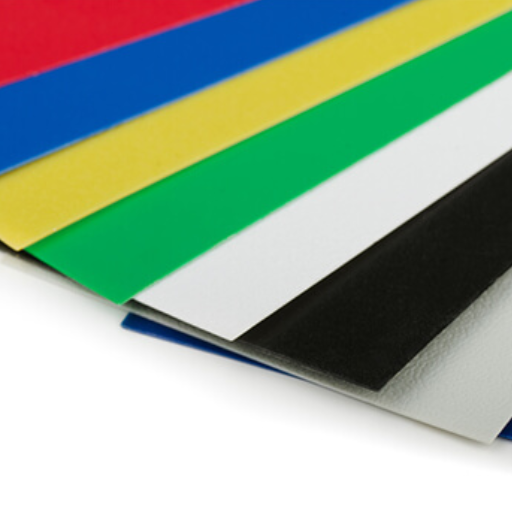
ABS is an acronym for ‘Acrylonitrile Butadiene Styrene’. It is a thermoplastic copolymer of acrylonitrile, butadiene, and styrene. In particular, ABS is praised for durability and impact resistance as well as for ease of processing. Acrylonitrile gives chemical stability and stiffness, while butadiene effectively imparts toughness. Styrene provides detachment and a smooth, shiny surface. These qualities make ABS an excellent choice for applications from automotive parts and consumer appliances to consumer electronics and even 3D printer filaments. It is a strong plastic and at the same time light in weight, cementing its place as the first choice of manufacturers.
Background of ABS Plastic
The manufacture of ABS plastic is through a process called emulsion or continuous raw mass polymerization. In this process, the successful application of the desired softener starts through the incorporation of the monomers – acrylonitrile, butadiene, and styrene, which yield a tough terpolymer. Chemical stability and resistance to heat and oxidative media are provided by acrylonitrile, elasticity and impact toughness, and hence, the serviceability under mechanical stress is provided by butadiene. In contrast, styrene imparts hardness and a smooth surface because of its rigidity and easy-to-form nature. Such macromolecular building blocks are advanced polymerized techniques to restrict the distribution of polymer molecular weight, which is why there are no variations in the product.
For enhanced functioning, ABS can also be modified via compounding processes by adding fill materials, pigments, or other stabilizing agents to provide manufacturers with desired properties for a specific purpose. The average density of ABS is 1.04–1.07 g/cm³, with a glass transition temperature of approximately 105°C, and it can withstand a variety of different environments and is lightweight. This plastic is indispensable in industry because it goes beyond the form mastering without any challenges.
Significance of ABS in Various Industries
Given the popularity of the material ABS (Acrylonitrile Butadiene Styrene), its purpose is spread across numerous industries because of its high strength, appearance, flexibility, and ease of processing. In the field of automobiles, for example, dashboard units, wheel garnish, and seat interior parts are some of the items that are commonly made from ABS because of its ability to absorb impact and lighter weight, which is effective in promoting vehicle performance and fuel mileage. In the field of consumer electronics, cases for articles, such as keyboards, handsets, and televisions, which are made from ABS, have been advantageously used to accomplish two functions: providing strength and directing heat away. Likewise, the strength of ABS is appreciated in the construction industry in relation to its uses, such as pipes, helmets, and connections, because of its ability to withstand abrasion and even chemicals. Also, it is commonly used in the production of consumer goods like dolls, suitcases, and kitchen utensils due to its characteristic property of being able to be processed into complex forms and colorful surfaces. This is one of the properties which makes ABS a highly demanded material for innovations in a broad range of industries.
Key Properties of ABS Plastic
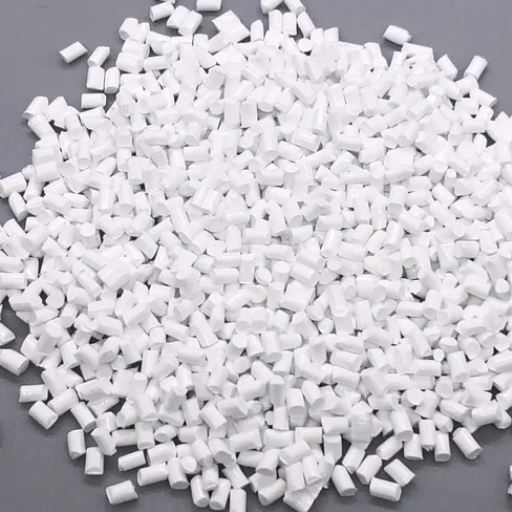
- High Impact Resistance
ABS also offers good impact endurance in that it is tough and can withstand heavyweight loading without excessive deflection. An HSBC insurance letter revealed that ANR250/100Z Grade HIS is known to have an ‘IZOD impact strength’ between 2.1 kJ/m² and 21 kJ/m².
- Excellent Tensile and Flexural Strength
This is made possible by a tensile strength of approximately 40-50 MPa and flexural modulus in the range of approximately 2000-3000 MPa thus allowing ABS to be used in some structural applications.
- Thermal Stability
There is also a high amount of heat, which is around 80-105ºC, that the material, which is ABS, can withstand before it softens, this is referred to as Heat Deflection Temperature. In order to cater for such applications, Heat stabilized grades have been prepared and manufactured.
- Chemical Resistance
The material is known for resisting a variety of acids, alkalis and oils however it can decompose in the presence of strong solvents such as esters, ketones and chlorinated hydrocarbons. This characteristically comes in handy in industrial and domestic products where minor chemical contact is typical.
- Low Density
The density range of ABS is about 1.04-1.07 g/cm³, which assists in reducing weight and does not compromise on the material’s load-bearing capabilities or cost very much.
- Ease of Machining and Molding
In terms of the machinery, ABS is easily cut and can be formed and molded into unique shapes. Products are commonly manufactured using injection molding and extrusion techniques, which enable precise dimensions in articles.
- Aesthetic Versatility
Mechanical Properties and Strength
Acrylonitrile Butadiene Styrene (ABS) is a substance famous for an extraordinary mix of qualities, with its mechanical performance being one of the key advantages. The product also competes favorably in the markets due to its wonderful performance under impact, which is registered even at very low temperatures due to the ability of the butadiene component of the plastic to take up the impact energy and redistribute it around. The elongation at break of ABS is typically between 40 and 50 MPa, which is enough to provide an equation that is normally used for scaled stress and strain measurements. This is to suggest that ABS is quite elasticity and intact even under pressure is present in the materi during winding element operations or any other kind of bending compressive forces, operations.
This material particularly exhibits a great deformation resistance and is capable of withstanding wear and tear effortlessly under the designed working conditions. Ambient temperature is the parameter that is even better, as it has been extended in the range of -20°C to 80°C. Therefore, this makes the material suitable for use in and out without a doubt. In particular, ABS has a good pull force that is applied in scientific terms as creep strain upon load and restrains its ability to deform itself and maintain the mechanical strength even up to ultimate loading. Such zones evoke the robustness and durability of the material in relation to study and also in the use of manufactured things.
Durability and Impact Resistance
ABS plastic boasts of an astonishing wear as well as impact resistance, which is the reason why it is mostly famed in the advancement of numerous industries and businesses worldwide. This material is also capable of withstanding sudden shock and high mechanical impacts without rupture or loss of its structural integrity. Moreover, several have shown that ABS can maintain its properties, including its impact strength, even below the freezing temperature. Furthermore, its viscoelastic structure, which values textured abs acrylic among the rest of the materials, fortifies its hardness features by energy absorption and deformation formation during the impact, because of which cracking or breakage in the material is minimized. Such properties are what make this material advantageous for applications such as those comprised of automotive components, ensuring the user’s products with less of these catastrophic effects, salient functions, not omitting the housing of electrical equipment.
Versatility and Processing Characteristics
The loopholes in the effectiveness of the material are such that it can be restructured to fit devices using newer methods of making such devices. For example if it can be hard or soft and repeated with ease or not. Or it has intermediate elements in it. There is a greater likelihood that even the two motions in the two elements of rectification are not isokinetic. Thermal stability is another key parameter that engineers should consider in determining the physicochemical properties of Valcap. The loss of mechanical properties attached to the crumbing material was controlled by lowering the processing temperatures of the polyamide 12. Practically, this is a viable option once the said material has a frequency of additives. Over time, the amount of available polymer waste will increase, causing serious pollution, and the insoluble problem of how to dispose of it effectively will become more pressing.
Common Uses of ABS Plastic

- Automotive Components
The vehicle market is the largest consumer of ABS for the majority of its components. For example, parts in car dashboards, interior trims, bumpers, and mirror housings are made up of plastic. In such a material that can be deformed easily as it is, such abilities are a boon as they help in serving a special purpose. Research has shown that the introduction of such plastic materials in cars has helped in reducing the overall weight of the cars, hence increasing the fuel efficiency. In this regard, research proved that the use of ABS material in auto parts resulted in an increase of fuel efficiency by 10%.
- Consumer Electronics
There are many cases where electronic products need housing, like television sets, remote controls, and laptops, and this material is especially popular in their production because of its properties. Its properties that are good for electronic applications are its resistance to shock and dimensional stability mostly due to its insulating characteristics. Concluding this information, near about 40% of all consumer goods are composed of ABS in the outer covering just due to the bright finishing and tough properties of the plastic.
- Construction Materials
As a result, ABS material is rather useful for producing pipes, fittings, and plates in construction. Such properties are intended to lower adverse environmental effects caused by toxic emissions of chemical products. This light composite helps in cutting down installation expenses not to mention that it does not exert more pressure on the building. ABS pipes are well accounted for an estimated 25% of the rigid plastic piping share.
- Household Goods
In the industry that involves household items – in the production of, for instance, vacuum cleaners, kitchen utensils, storage containers – ABS plastic is very effective. Its composition also prevents wear and tear, this in turns make them ideal for long usage in a household. For instance, in order to enhance the life of refrigerator insulation concealing, ABS plastic is the ideal material with current mechanical properties and temperature reductions.
- 3D Printing Materials
Household Items Made from ABS
There are various options that can be used in the manufacture of different household goods and materials, and most of these factors include high stress intensity, high strength, which ensures that the materials are aesthetically pleasing, and the ability to predict their strength as a function of time. The most common examples include vacuum cleaners, kitchen gadgets, and trash bins. As a result, it is no wonder that such a material as ABS is primarily used since it is very lightweight, making it easy to fix finer designs like housings for electronic parts and remote controllers. In addition, the high heat retention properties and reduced dielectric effects help it withstand excessive temperature levels and aggressive chemical environments. The relevance of ABS in today¡¯s functions regarding durable materials and flexibility expands the use of this material to the rest of the plastics field.
Automotive Parts and Components
ABS plastic is the most common material in the automotive industry due to its combination of the mentioned properties, i.e., toughness, hardness, and light weight. It is employed much more in the construction of car seats, consoles, and door panels inside the vehicles, where tensile strength and ductility need to be designed. Various exterior parts, such as bumper bars, door handles, and radiator grilles, are also created using this plastic because these parts can withstand weather factors without being destroyed. Additionally, it is possible with this type of plastic to make precise molding, providing minimum tolerance and allowing for the construction of special types of structures for transportation purposes. Advanсes in ABS polymer modifications have been found to facilitate processing and improve technical performance characteristics, thus deeply integrating said material in the construction of contemporary automobiles.
Electronic Enclosures and Applications
ABS plastics are widely used in the field of electronics as they do not require chemical mixtures for resistance to impact, are lightweight, and hence more manageable. In particular, this polymer is used successfully in enclosure design for networking devices, such as routers, and power banks, as well as consumer electronics in order to maximize electromechanical properties on a cost-performance basis. Besides, the thermal characteristics and electrical resistivity of this type of polymeric compound are excellent. Abs materials with increased flammability retarded are commonly used to fulfill high safety standards in such application as power supplied devices and industrial panels. These impulse and acquired features of the material, accompanied by the addition to the theory of materials, allow the material to satisfy two levels of need, which are functions and aesthetic appearance, in electronics and other present engineering programs, proving the material’s reach in up-to-date engineering tools and equipment.
Benefits and Drawbacks of ABS Plastic
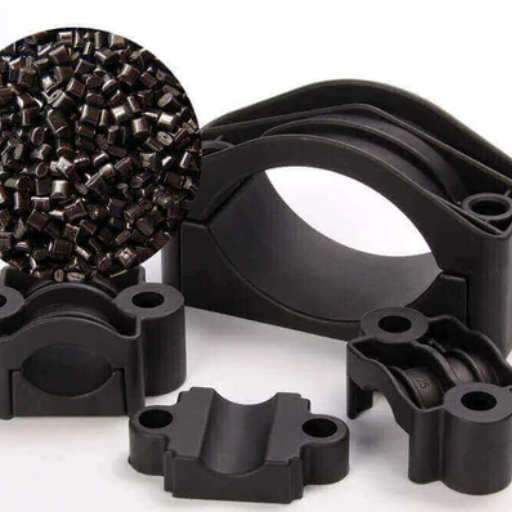
Benefits of ABS Plastic:
- Durability: Its property of high surface hardness ensures that they are able to withstand physical impact hence can be used in situations where the material needs to be tough.
- Processability: It easily enables the molding and machining at very minimum temperatures compared to most of the other available plastics, providing faster production rate.
- Cost-Effectiveness: Given the very large quantities of this material and the ease at which it can be processed, you can get the ABS at a very cheap price.
- Versatility: It is quite good in that, with this material you do not need to compromise on any of the three properties those are mechanical strength, thermal stability, and appearance. It is applicable to a fairly broad range of things.
- Chemical Resistance: It is also able to withstand exposure to a number of different types of chemicals thereby allowing its use in harsh environments.
Drawbacks of ABS Plastic:
- Fragility at Low Temperatures: In extremely low temperatures, it is likely to get easily broken and can be used in regions with such temperatures.
- Environmental Impact: It is petroleum based and is not easily degradable encouraging the use of natural protection methods and balance technology.
- UV Sensitivity: Long exposure of this material to the sun is likely to weaken its structure and ultimately because of either weakening or discoloration.
- Flammability: Even though in the presence of flame retardants it stops burning, the standard ABS burns and calls for extra caution when applied in particular instances of users.
Cost-Effectiveness and Lightweight Nature
Many people consider ABS plastics as cost-effective due to the great balance of its raw material pricing and production costs. This is because its reasonable expenditure makes it best suited for applications that require excellent performance without hugely incurred expenses, like in the automotive industry, consumer electronics, and kids’ playthings. To add to the advantage of low differential cost, the low weight of the material also uses less cost in transport, besides the cost for handling during large-scale production and assembly processes. Such equipment seems to be ideal for industries that are in pursuit of fuel economy that is practically unattainable, such as in the automotive sector and aerospace. Any move to replace heavier components within the industry leads to the proper utilization of fuel energy. This makes the thickness and resistance of the material a good fit for this type of material. Besides, even efforts that go into improving the cost of manufacturing of ABS do not cease, which means that this material does not lose its place in the competitive market of its applicability
Ease of Processing and Manufacturing
A significant factor of ABS (Acrylonitrile Butadiene Styrene) is the high ease of working with this material, the harmlessness of changing kind in different industrial branches. Being easier to work with, this is a thermoplastic polymer that can be processed in different ways, including injection molding, thermoforming, and rotational molding. Its relatively low melting point implies some savings on the energy spent for shaping, heaviness of the moulding and the duration of the cycle time are some results of the short time energy in the process. Moreover, advances in the technology of forming have led to a new way of blending in order to achieve more uniform ABS blend systems. Thanks to these improvements, manufacturers are able to achieve increased health levels and better surface finishes without the need for additional finishes. Such post-processing operations as painting, electroplating and adhesively bonding are also convenient to use in customized parts production, since they enhance ABS machinability. In the end, ABS material mix becomes convenient in the manufacturing workflow, just as it maintains its precision and consistency.
Disadvantages: Temperature Sensitivity and UV Resistance
Despite the economic advantages that come with utilizing ABS plastic, it is important for you to note that there are specific caution points with regard to the product in relation to temperature and exposure to ultraviolet (UV) rays. The critical temperature at which ABS is used is much lower than the common usage of ABS and is in the range of -20°C to 80°C (-4°F to 176°F). Beyond this temperature range, the material will either deteriorate or begin to deform. Deriving its properties through high-temperature molding, ABS doesn’t hold up too well at very high temperatures of exposure and, as such, is not ideal for use in very hot applications.
Moreover, ABS is not sustainable in exposure to UV radiation for a long time, i.e., it will decay and become discolored and brittle when exposed to direct sunlight without the use of proper coatings or additives. In view of the aforementioned, the use of ABS in situations where exposure to the outdoor environment is necessary is minimized unless ultra violet inhibitors are incorporated in the material. These attributes should be among those that determine the choice of the material in order to assure durability and evenness performance in critical situations.
Comparison with Other Plastics

ABS vs. PVC: Strengths and Weaknesses
|
Parameter |
ABS |
PVC |
|---|---|---|
|
Cost |
Moderate |
Generally lower |
|
Strength |
High impact strength |
Rigid but less impact-resistant |
|
Chemical Resistance |
Moderate |
Excellent |
|
Heat Resistance |
Higher resistance |
Lower resistance |
|
Flexibility |
Less flexible |
More flexible |
|
Durability |
Durable under moderate conditions |
Highly durable in various environments |
|
Processing Complexity |
Easier to process |
More complex for certain applications |
|
Weight |
Lightweight |
Slightly heavier |
|
Environmental Impact |
Less environmentally friendly |
Concerns due to chlorine content |
|
Applications |
Electronics, automotive, appliances |
Plumbing, construction, medical devices |
Comparing ABS and HDPE Properties
|
Property |
ABS |
HDPE |
|---|---|---|
|
Durability |
Durable under moderate conditions |
Excellent durability in diverse environments |
|
Impact Resistance |
High impact resistance |
Superior impact resistance |
|
Processing Complexity |
Easier to mold and shape |
Complex processing for some applications |
|
Weight |
Lightweight |
Slightly heavier than ABS |
|
Thermal Resistance |
Moderate heat resistance |
High thermal resistance |
|
UV Resistance |
Low UV stability |
Good UV resistance |
|
Chemical Resistance |
Moderate chemical resistance |
Excellent chemical resistance |
|
Cost |
Generally more affordable |
Higher material cost |
|
Recyclability |
Limited recyclability |
High recyclability rate |
|
Environmental Impact |
Less eco-friendly manufacturing |
Concerns over chlorine components |
|
Applications |
Electronics, automotive, appliances |
Construction, plumbing, medical devices |
|
Flexibility |
Semi-rigid |
Highly flexible under stress |
|
Moisture Resistance |
Moderate water absorption |
Excellent moisture resistance |
|
Tensile Strength |
High tensile strength |
Lower tensile strength than ABS |
Polycarbonate vs. ABS: A Detailed Analysis
|
Parameter |
Polycarbonate (PC) |
ABS (Acrylonitrile Butadiene Styrene) |
|---|---|---|
|
Heat Resistance |
Outstanding, tolerates up to 135°C |
Moderate, tolerates up to 105°C |
|
Impact Strength |
Extremely high, resists heavy impact |
Moderate, suitable for daily use |
|
UV Resistance |
Limited without coatings |
Poor, prone to yellowing over time |
|
Chemical Resistance |
Resistant to many oils and greases |
Limited, vulnerable to solvents |
|
Scratch Resistance |
Moderate without coatings |
Low, scratches easily |
|
Transparency |
Naturally transparent, easy to tint |
Opaque, with limited transparency capability |
|
Cost |
Higher manufacturing and material cost |
Cost-effective and widely available |
|
Processing Temperature |
Requires higher processing temperatures |
Lower, easier to mold |
|
Durability |
Long-lasting under extreme conditions |
Durable under regular conditions |
|
Recyclability |
Limited recyclability potential |
Highly recyclable |
Reference Sources
-
“Types of polymers using in 3D printing and their applications: a brief review”: This study discusses the use of ABS plastic in 3D printing, highlighting its particle release during printing and its UV resistance. It compares ABS with other polymers, emphasizing its durability and application versatility. Read more
-
“Recovery of Plastics from WEEE through Green Sink–Float Treatment”: This research explores the recovery of ABS plastic from Waste Electrical and Electronic Equipment (WEEE) using a green sink–float method. It identifies the presence of elements like Ti and Zn in ABS and PP plastics, contributing to better recycling processes. Read more
-
“Design of Experiments Screening Design Used to Optimize the Punching Process of Cable Ducts Made of Polymer Blend PC/ABS”: The study optimizes the punching process for cable ducts made from PC/ABS blends, ensuring compliance with flammability standards (UL94). It highlights the material’s quality characteristics and processing parameters. Read more
Frequently Asked Questions (FAQs)
Q: What is ABS Plastic and its Polymer Composition?
A: ABS plastic, or acrylonitrile butadiene styrene, is a versatile plastic made from the polymerization of three monomers: acrylonitrile, butadiene, and styrene. This unique combination grants ABS its strong and durable characteristics, making it a popular choice in various applications. The presence of polybutadiene contributes to its toughness and impact resistance, while the acrylonitrile provides good chemical resistance and thermal stability. The styrene component adds to the aesthetic appeal, allowing for a smooth finish. Overall, ABS plastic is widely used in manufacturing plastic items and parts due to its excellent mechanical properties.
Q: What are the Benefits of ABS Material?
A: The benefits of ABS material include its robustness, impact resistance, and versatility in applications. It is a strong and durable thermoplastic that can withstand heavy use, making it ideal for products like LEGO bricks and computer keyboards. Additionally, ABS offers good electrical insulating properties, making it suitable for electrical applications. The material is also recyclable, aligning with sustainable practices in manufacturing. Its ability to be extruded into various shapes further enhances its usability in creating complex plastic parts.
Q: How is ABS Used in Industrial Applications?
A: ABS is widely utilized in industrial applications due to its excellent mechanical properties and ability to be molded into intricate designs. The process used for shaping this thermoplastic often involves plastic extrusion, which allows manufacturers to create consistent ABS parts efficiently. Industries such as automotive and consumer electronics frequently use ABS for components that require durability and resistance to impact. This material is particularly favored for items that need to maintain structural integrity under stress while being lightweight. Furthermore, ABS’s compatibility with additives enhances its performance in specific applications.
Q: What are the Plastic Properties of ABS Polymers?
A: The plastic properties of ABS polymers include high impact resistance, good tensile strength, and low density, making them ideal for a range of applications. These polymers exhibit excellent mechanical properties, allowing them to endure physical stress without cracking or breaking. Additionally, ABS plastic is known for its good electrical insulating properties, which is crucial in the manufacturing of electrical components. The material’s resistance to heat and chemicals further enhances its utility in various environments, including food processing and automotive uses. Overall, these properties contribute to the versatility of ABS in many plastic materials.
Q: Are ABS Plastic Parts Recyclable?
A: Yes, ABS plastic parts are recyclable, which is an important consideration in today’s environmentally conscious manufacturing practices. The recycling process typically involves collecting used ABS items, cleaning them, and then processing them into new plastic products. This sustainability aspect makes ABS an attractive option for manufacturers looking to minimize waste. Additionally, recycled ABS retains many of the original material’s properties, allowing it to be used in new applications without significant loss of quality. As the demand for recyclable materials increases, the recycling of ABS plastic is gaining more attention in various industries.







